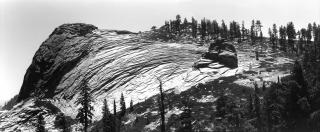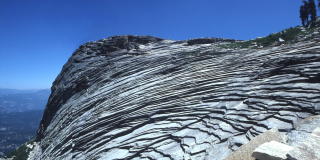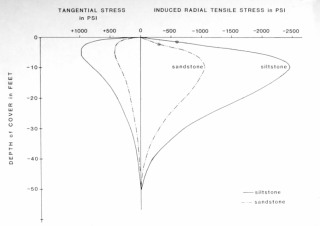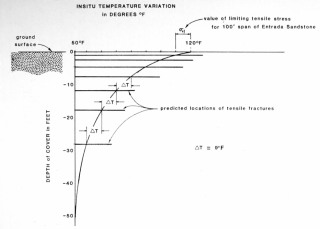
Berkeley geomorphology Professor Clyde Wahrhaftig and his long-time colleague King Huber patiently listened to
my hypotheses on exfoliation and suggested a number of sites where I could measure joint spacings and easily collect samples for laboratory testing.
The most poignant exposure I've ever encountered is this glacial cirque at Little
Shuteye Pass, just south of Yosemite National Park.

Closer view of the glacial cirque at Little Shuteye Pass. The profusion
of exfoliation jointing at this location is only rivaled by that seen
on Half Dome in Yosemite. These joints are formed in the Mt. Givens
granodiorite, the strongest rock we ever tested at Berkeley (qc = 45,000
psi/310 MPa).

The work at Little Shuteye Pass developed valuable test data
on the thermal characteristics of the granodiroite, and later, on both
the Entrada and Navajo sandstones. This view shows the predicted
radial and tangential stresses developed beneath an exposed face of
the Navajo sandstone siltstone and sandstone facies from Zion Park,
when subjected to diurnal temperature
shifts of 70 degrees F. Previous workers had not realized that
stress is a function of mechanical restraint, R. If the rock is
free to expand and contract (such as a brick of material in a lab),
no stress will develop. But, if the rock is constrained between
two systematic joints, significant stresses can result.

This shows the computer model prediction of exfoliation/sheet/valley
side joint formation due solely to temperature change of 70 degrees
F with increasing depth. Note that the spacing between joints
increases with increasing depth of cover, as is observed in nature.
This explained the countless observations I had made as a rock climber
during the previous decade.
Questions
or comments on this page?
E-mail Dr. J David Rogers at rogersda@mst.edu.

|